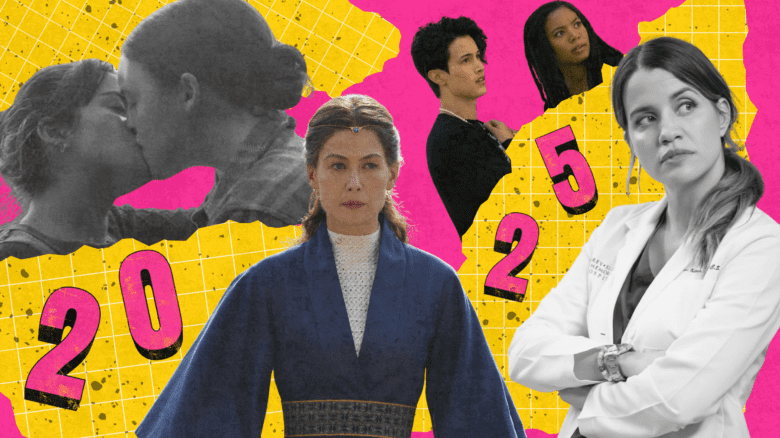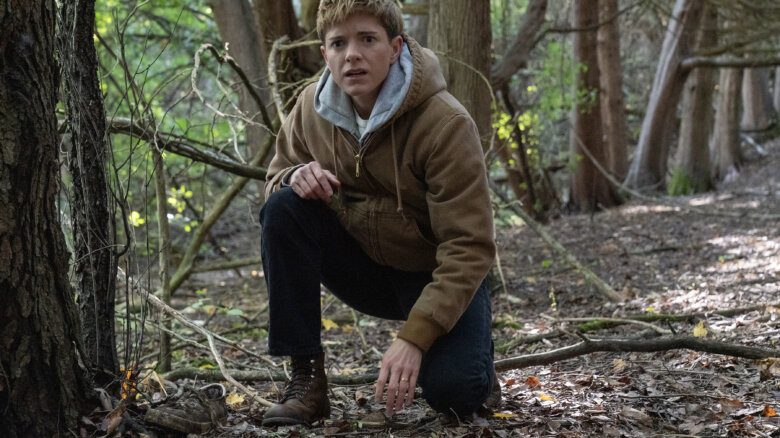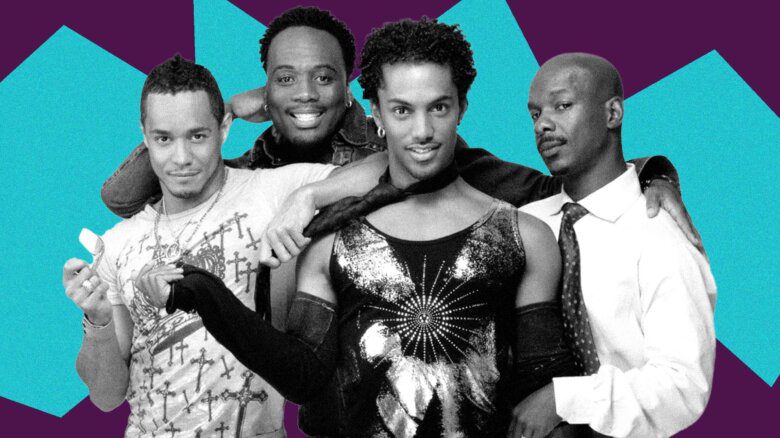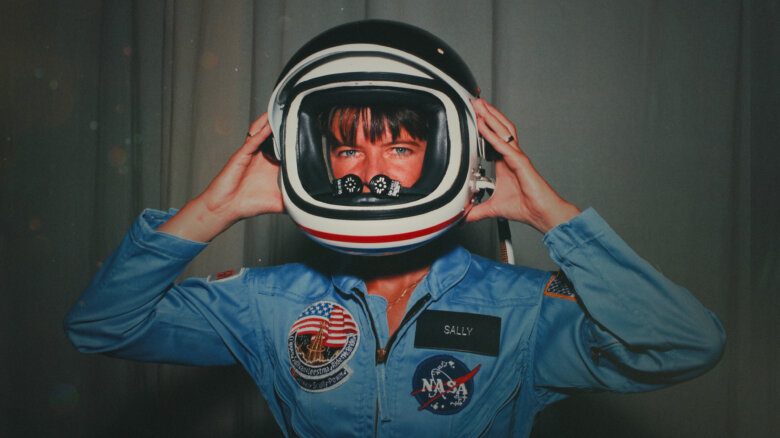In the summer of 2024, Godzilla changed genders. Again. This time, it happened in the lead-up to Godzilla x Kong: The New Empire, the latest installment in the Monsterverse franchise. (This is Godzilla’s American franchise; in Japan, Godzilla works with Toho Studios.) “Godzilla is ‘evolving’ into a pink, slim-waisted, big-booby version, and I’ll bet they are transitioning him,” wrote one deeply confused, and perhaps horny, internet commenter. Internet dopes began panicking about new, “woke,” womanly Godzilla, and trans people everywhere gleefully poured fuel on the fire.
What these internet dopes didn’t know was—well, a lot. But what they didn’t know about Godzilla is that Godzilla is already the most transgender monster in history: a large, stompy, radiation-fuelled monument to gender fluidity. How is this possible, you ask? What evolutionary quirk has allowed one thicc lizard to stay ahead of the gender curve for 70 years and counting? Come with me, as we contemplate one of science’s great unsolved questions. It is time to transvestigate Godzilla.
Is Godzilla a trans woman?
Yes. In Godzilla x Kong: The New Empire, she begins to live her truth. Throughout the Monsterverse franchise, Godzilla has been a he/him King of the Monsters, who emits bright-blue radiation (the boy colour) when in his feelings. This changes after Godzilla meets and battles the ancient sea dragon Tiamat, pronouns she/her, radiation pink (the colour for girls). The fight with Tiamat awakens something in Godzilla, who soon retreats into a massive iceberg, from whence—after presumably revisiting some childhood memories, streaming I Saw the TV Glow, and crying a little—she emerges with glowing pink spines. The scientific community issues a dazzled and supportive announcement that Godzilla has “changed.”
Yet this is not Godzilla’s first gender reveal. Which brings us to our next question:
Is Godzilla a trans man?
Yes. In Godzilla (1998), directed by Roland Emmerich, Godzilla is once again using he/him pronouns—and he reveals, midway through the movie, that he is pregnant. “A very unusual ‘he’!” chirps co-star Matthew Broderick, transphobically. Yet the movie continues to respect Seahorse Dad Godzilla’s pronouns, no matter how many babies he pops out (it’s at least 200), making it perhaps the most progressive blockbuster of the 1990s.
There are two things to note here. One of them is that, of the two overtly queer movies that Roland Emmerich has directed, Godzilla (1998) and Stonewall (2015), Godzilla actually has more trans content than Stonewall did. Roland Emmerich is not much of a historian. The second is that, in a pattern sadly typical of our community, transmasculine Godzilla inspired less outrage than transfeminine Godzilla, but is also far less visible: no one really watches Godzilla (1998) anymore.
Is Godzilla non-binary, gender-fluid, genderqueer or agender?
Yes—and not just because words like “man” and “woman” are questionable when applied to a giant, stompy lizard thing. Only Americans use gendered pronouns for Godzilla—they were introduced in the first subtitle translation, and “he” was used only because it was considered a “universal” pronoun at the time. In Japan, the monster has always been a gender-neutral it/its, from the original Gojira (1954) to this year’s Godzilla Minus One.
Nor is Godzilla unique in this. Comic writer Zoe Tunnell, who wrote this year’s Godzilla: Valentine’s Day Special, says she was given pronoun guidance from above. “The official guidelines are that every kaiju except for Mothra is ‘it/its,’” she tells me. “Mothra can use ‘she/her,’ but every other monster in the Toho line, it/its is genderless.”
So it would appear that—apart from honouring the irrepressible womanhood of feminist icon and large bug Mothra—Japanese filmmakers believe the gender of a skyscraper-size radioactive monster is less relevant than its capacity to stomp people. Fortunately, we in America know better, and are here to determine which Crunch Gym locker room Godzilla is allowed to use.
How can all of these genders belong to just one Godzilla?
There’s an old joke my father used to tell. It goes like this:
Q: Where does an 800-pound gorilla sit?
A: Anywhere he wants.
I encourage you to think of that joke when you contemplate the 390-foot-tall, 164-ton subject of our inquiry. I mean, are you really going to tell Godzilla how Godzilla’s gender is supposed to work?
In all seriousness, though, if you need a more scientific explanation, it’s probably because Godzilla’s a dinosaur.
Is Godzilla a dinosaur?
Yes. “I am a paleontologist,” says actual paleontologist and acclaimed science writer Riley Black, author of The Last Days of the Dinosaurs. “I have read about dinosaurs extensively. I can narrow down at least the group to which Godzilla belongs. And I have some peer-reviewed research that I can back this up with.”
Specifically, Black points to a 1998 paper by paleontologist Kenneth Carpenter, which finds—based on the unusual armoured plates on his back—that Godzilla is a “very large, very late surviving” member of the ceratosaurs. However, Black cautions, Godzilla’s species—like his gender—changes from film to film. In the Roland Emmerich movie, for instance, he is pretty clearly implied to be an iguana that had an atomic bomb dropped on him (a process historically less known for producing Godzillas than it is for producing really, really dead iguanas).
Thus, Black notes, the ever-shifting canon of the Godzilla universe makes species classification hard. “It really depends on what Godzilla represents, in a sense,” Black says. “Godzilla has been different throughout the character’s history, obviously starting out as a metaphor for America’s atrocities against the Japanese, but also then turning into a superhero-type monster, into a natural disaster, into a warning. There’s even a film in which Godzilla represents the ghosts of everyone the Japanese killed during World War II.”
Unfortunately for actual paleontologist and acclaimed science writer Riley Black, author of Last Days of the Dinosaurs, I had already committed pretty hard to the “Godzilla is a dinosaur” explanation. This leads me to my follow-up:
Are dinosaurs transgender?
Yes. They have been at least since Jurassic Park, in which a bunch of dinosaurs specifically bred to be female start switching up their anatomies and impregnating each other. Black has consulted for the Jurassic World franchise—specifically, the toy line. “I created what was internally referred to as a dinosaur Bible that had lots of basic lengths, weights, general behaviours, things like that. I remember visiting Universal Studios in Hollywood and seeing some of those facts up on the board outside the Jurassic World ride, which was neat”—and is thus the most logical person to ask about the science that renders all dinosaurs, real or fictional, retroactively trans.
The sex-switching in the original Jurassic Park, Black says, was based on now-outdated findings about West African frogs. “Those frogs don’t change sex the way the movie says they do,” Black tells me. “But we have plenty of other organisms that do.” Crocodiles and alligators, for instance, don’t have sex chromosomes; their sex is determined by the temperature at which their eggs incubate. Dinosaurs were the ancestors of present-day birds, and some scientists are currently working to resurrect them by reverse-engineering the humble chicken. Among chickens—this is absolutely true—hens spontaneously turn into roosters all the time.
So, there you have it: if science ever gives us a real Jurassic Park, it will also give us transgender dinosaurs. This is because dinosaurs are transgender, including—most famously—the omni-gendered mutated sort-of-maybe-a-dinosaur known as Godzilla.
Is Godzilla gay?
For the answer to this question, I consulted the emotionally intense Quora thread “Is Godzilla Gay?,” where one popular answer states that “Godzilla has a relationship with Mothra who is a girl and Godzilla is a boy so therefore no, Godzilla is not gay.” However, this is not grounded in settled science. “That’s forgetting bisexuality,” notes Black.
Tunnel—official creator of romantic Godzilla media—notes that Godzilla and Mothra may not be as close as many people assume: “Godzilla has emotions, but I don’t think the emotions are of a sapience level that, like, romance and love would come into the equation.” I ask if it is possible that Godzilla has an avoidant attachment style. “One hundred percent, yes,” Tunnell says. She is clearly humouring me, but that’s all I need.
Is Godzilla an ally?
Yes. This brings us to Coming Out, the 2020 short film directed by Cressa Maeve Áine, in which Godzilla celebrates the transition of its young daughter (also a Godzilla, albeit a very cute one). You also get to see Godzilla in reading glasses, which is an itch I didn’t know needed scratching until just now.
Áine made the film as a tribute to her own father, who had died of dementia not long before. “He had introduced me to Godzilla, to stop motion and to movies in general,” Áine tells me. “I hadn’t planned to come out to him because I worried if he’d even understand, but during our last conversation, I decided to on impulse, and he had not only shocking clarity and understanding, but immediate love and support. So Coming Out is essentially my ode to him, using characters and a medium he presented to me as a kid.”
Upon its release, the film was shared on social media by Toho, leading fans to conclude that—in Japan, at least—PFLAGodzilla is canon.
Why am I crying?
Because trans people love Godzilla. For many of us, that love started when we were very small. For Áine, Godzilla is a reminder of her father’s love; for those of us who grew up in unsupportive environments, Godzilla was often the all-powerful protector we needed but never got.
“Coming from a home that was not safe for kids, these monsters were kind of, I want to say, like the parents that I didn’t have,” Black says. “This was a safe and constant presence in my life. I can always trust Godzilla.”
When Black goes to museums, she says, she’ll still crouch down in front of the dinosaur exhibits, trying to recapture the perspective of a child: “I can remember being that small,” she says. “Everything is big and overwhelming and all the adults around you are controlling everything about your life … I can at least imagine what it would be like to be friends with the monster, maybe even be the monster. I know I’m going to get bigger and change, and this place where I’m stuck, that’s terrifying, and I feel like I’ve got no power or say to change it—there are things beyond it. In a lot of ways, monsters got me through.”
Will there ever be a definitive gender for Godzilla?
Let’s hope not. Godzilla’s greatest power lies in its ability to be many things to many people: “It depends on the day for me, personally,” says Áine. “Sometimes I like Godzilla to be a doofy dad, sometimes I like the goddess force of nature … I’ll watch Shōwa-era movies and see a boomer dad, but there is no convincing me that Godzilla vs. Kong 2021 isn’t 100 percent dyke drama.”
For me, Godzilla will probably always be a trans guy, because that’s what I am—and also, frankly, because he’s a broad-hipped gentleman, and I think we need that representation. (“The body of Godzilla is relatively short and deep to hold the large gut and to keep the centre of gravity near the hips,” quoth paleontologist Kenneth Carpenter. Same, Godzilla!) For Áine, “Godzilla has come to embody my rage; my queer rage, my feminine rage, my trans rage.” For Black, Godzilla can mean sheer life-finds-a-way endurance, the capacity to keep going: Once, while filming a documentary, she found herself hiking up a seemingly endless hill. “I imagined Godzilla coming up over the hillside and just watching me do it and stomping along. And that gave me the motivation,” she says. For Tunnell, Godzilla’s essence is beyond definition: “Godzilla is in your heart,” she says, wisely. “Whatever. Whatever feels right to you.”
Godzilla, in other words, embodies our own queerness—because Godzilla, no matter which gender you attribute to him, is irreducibly queer. Áine points me to a famous quote by Godzilla’s original creator, Ishirō Honda: “Monsters are tragic beings. They are born too tall, too strong, too heavy … They do not attack people because they want to, but because of their size and strength, mankind has no other choice but to defend himself.” Honda also noted one of the strangest and most miraculous powers of the genre—after watching a misfit be attacked for what it is, audiences almost invariably end up siding with it. “People end up having a kind of affection for the monsters,” Honda said. “They end up caring about them.”
“What makes these monsters queer is that they don’t easily fit in any box that we make for them. They are here to challenge the structural order of society,” Black says. “Godzilla only shows up as a problem, because that isn’t a regular animal. They can communicate, but not necessarily in the way that we do. They demand a change from the culture and society around it. Much the way that so many of us trans and queer people have been doing and are doing right now, saying, ‘No, we are part of this world.’”
After all, where Godzilla walks, the world changes—even if Godzilla does have to stomp through a city-size obstacle or two to get where it’s going. There are worse role models for a trans person to have in this world of ours.
Is there a little Godzilla in all of us?
Would you like there to be?
Let me rephrase that. Is Godzilla the friends we made along the way?
Yes, he/she/they/it/we are.
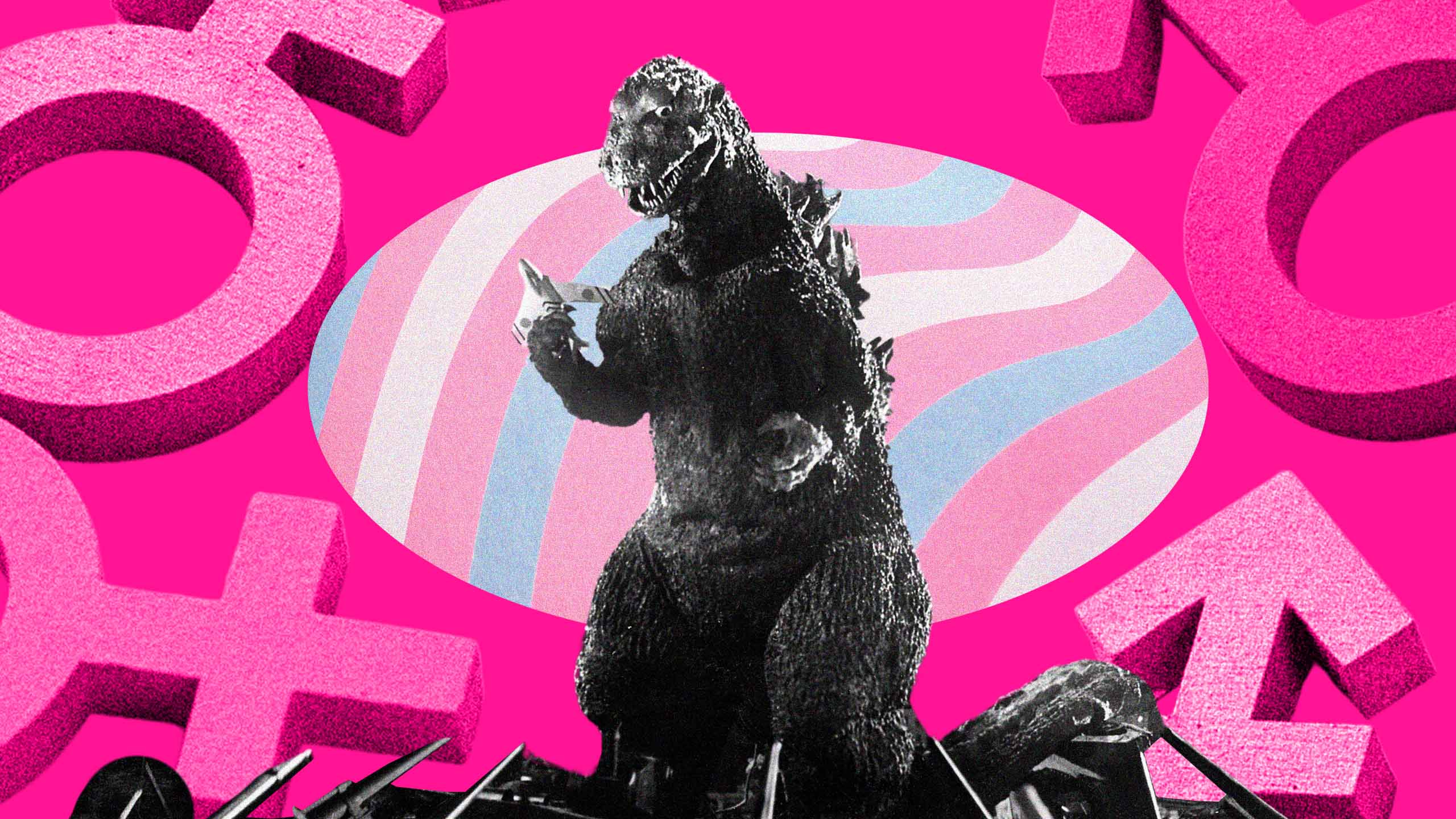

 Why you can trust Xtra
Why you can trust Xtra